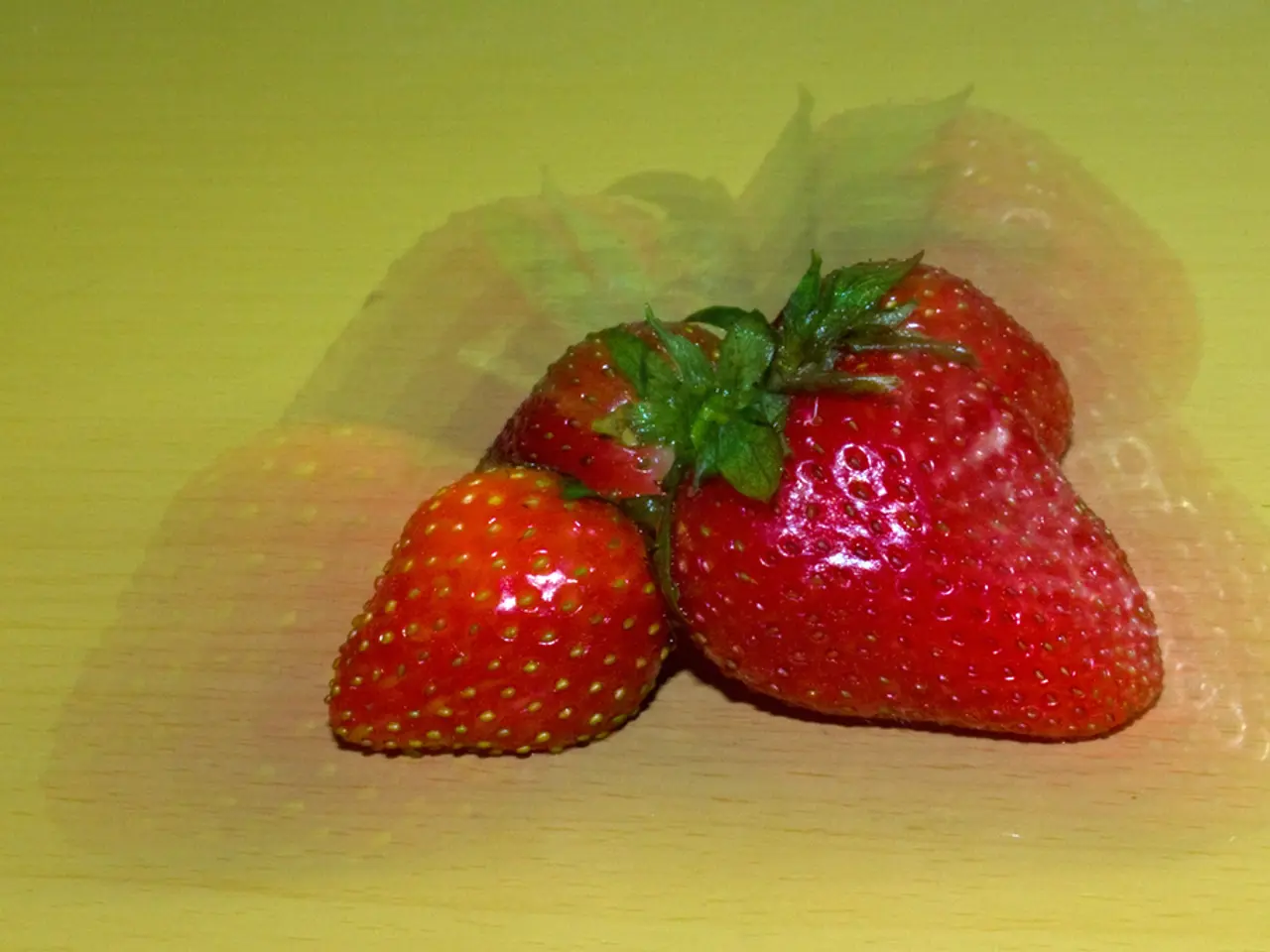Streamlining Strawberries in the Spring: A Step-by-Step Guide
In the heart of spring, it's time to tend to our strawberry beds for a bountiful harvest. By following these expert steps, you can ensure healthy plants, minimal fungal problems, and manageable pest populations, leading to a delicious crop of strawberries.
### Preparation and Bed Setup
Choose a well-drained soil location, ideally amended with compost or aged manure, applied at least two weeks before planting to improve soil health and nutrient levels. Avoid fresh manure as it can harm the plants. Plant strawberries in raised beds to improve drainage and air circulation. Space plants adequately to prevent overcrowding and promote airflow, reducing the risk of fungal disease.
### Regular Tidying and Maintenance
Apply a thick straw mulch layer around the plants in early spring and maintain it throughout the season. Mulch suppresses weeds, retains soil moisture, keeps berries clean, and reduces soil-borne diseases. Regularly remove weeds by hand or shallow cultivation to avoid root damage. Water consistently to keep soil moist but avoid waterlogging.
### Pest and Disease Management
Frequently inspect plants for pests such as aphids, slugs, spider mites, and fungal issues like powdery mildew and fruit rot. Early detection allows prompt organic control measures. Use companion plants that attract beneficial insects, insecticidal soaps, and traps to control pests without harmful chemicals. Ensure good air circulation through proper plant spacing, and apply preventive fungicides early in the season (if acceptable) to reduce fungal infections. Sanitize tools after pruning or weeding with solutions like diluted pine-sol or Listerine to prevent spreading diseases among plants.
### Seasonal Care
In spring, feed with organic nitrogen fertilizer, maintain mulch, and moisture to promote growth and prevent deformed berries. Keep soil cool and moist with straw mulch in summer, and continue nutrient feedings to support fruit development. In fall and winter, apply mulch to insulate plants against frost and maintain moisture for overwintering plants.
### Required Tools
- Garden gloves - Hand pruners (to be sanitized regularly) - Hoe or hand cultivator for weeding - Mulch material (straw is preferred) - Watering system (drip irrigation or soaker hose recommended) - Organic insecticidal soap or natural pest control sprays - Protective sprays or preventive fungicides (optional and depending on organic preferences) - Traps and sticky bands for pest monitoring and control
By consistently applying these tidying and maintenance steps, strawberry beds can thrive with healthy plants, minimal fungal problems, and manageable pest populations, leading to a bountiful harvest of delicious berries. After three to four years, strawberry plants' fruit size and quality decline, requiring replacement with new stock. Instead of buying new plants, new strawberry plants can be grown from runners. Happy gardening!
By tending to your strawberry beds with a well-planed home-and-garden setup, you can ensure healthy plants, minimal fungal problems, and manageable pest populations, resulting in a bountiful harvest of strawberries. With regular tidying and maintenance such as applying straw mulch and sanitizing tools, your strawberry garden will thrive, offering a lifestyle flourishing with delicious home-grown fruits and attractive green spaces.




